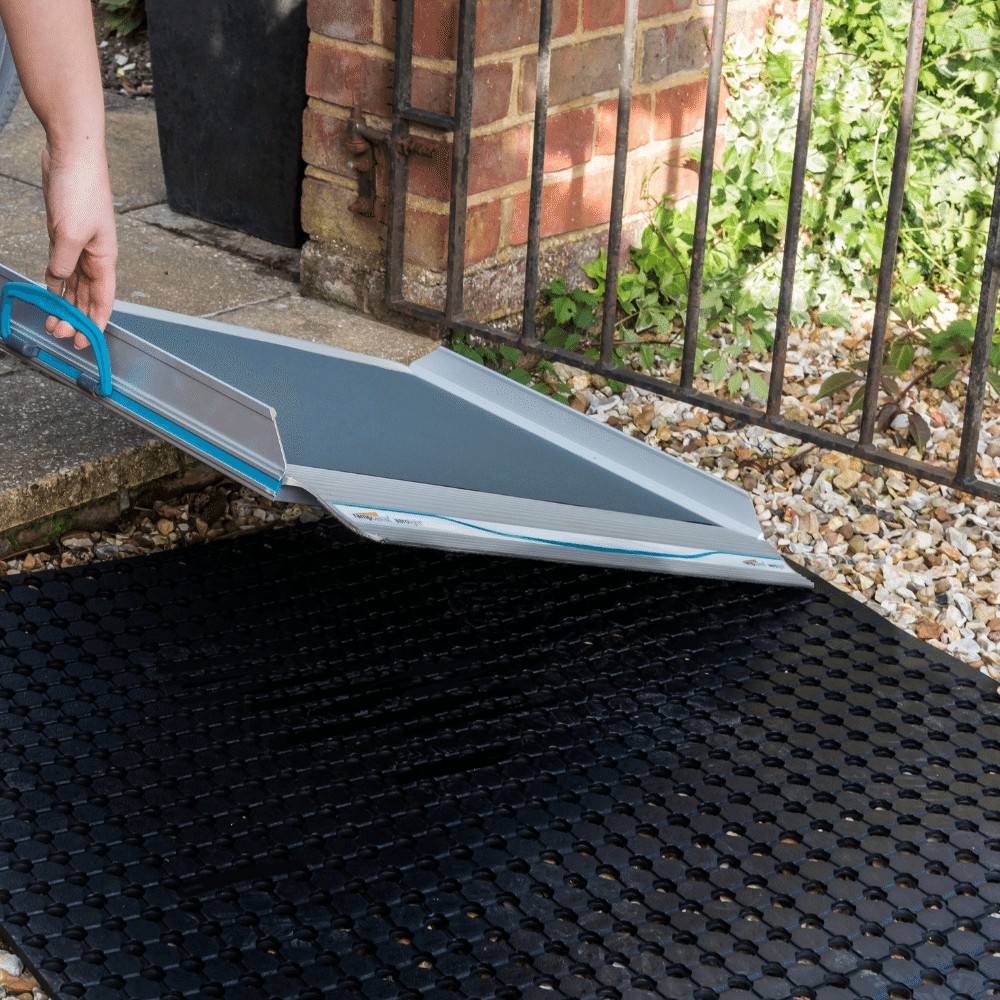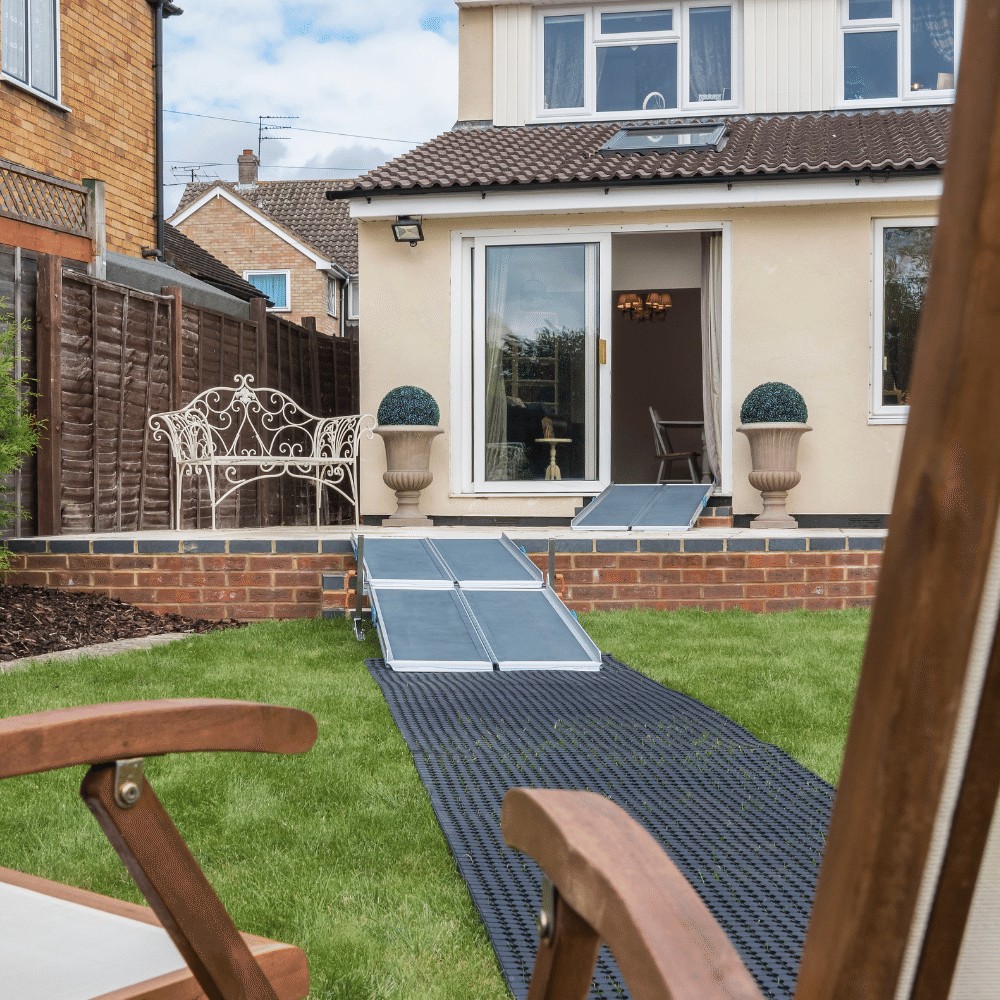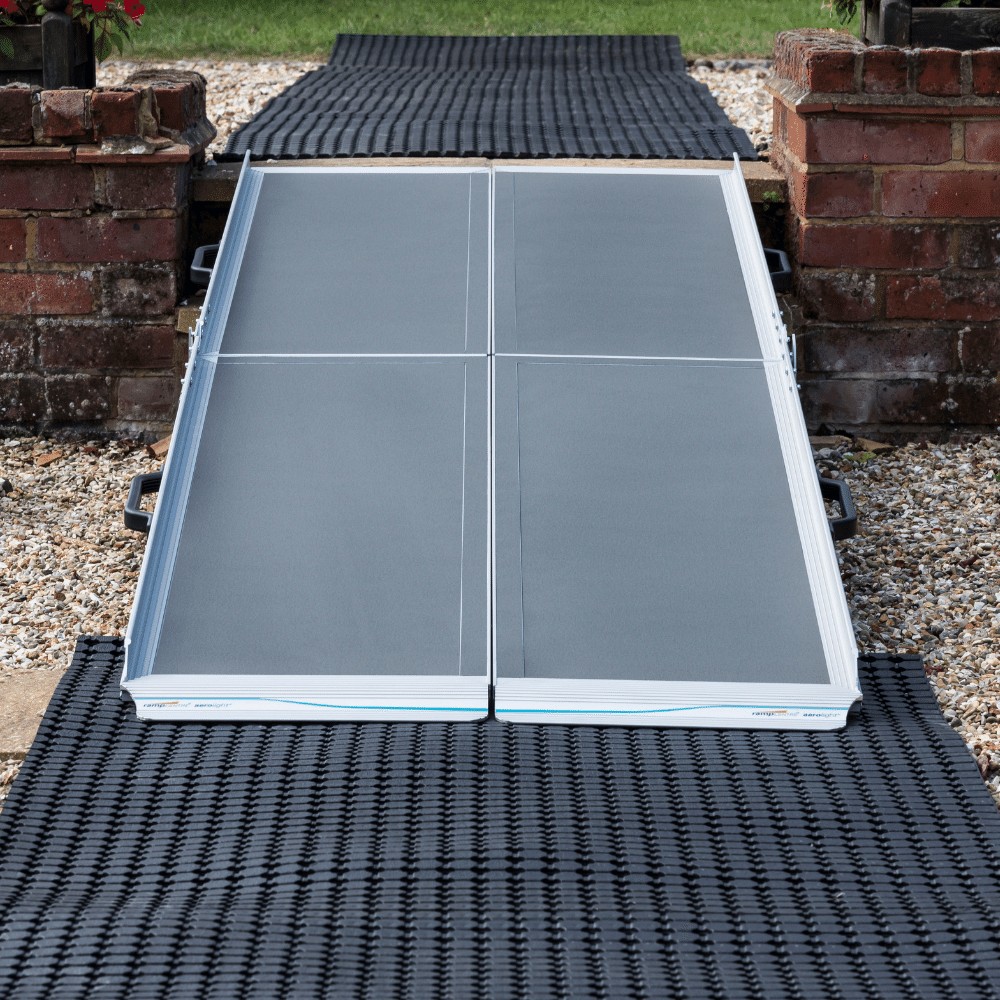Choosing the right access ramps is imperative not only for your safety but also for the success of your ramp project. We’ve identified 3 key areas that you should consider before starting your project:
- What type of access ramp do you need?
- What is the height or incline that is required of the ramp?
- What length of ramp is required?
We have been supplying Access Ramps for several years now and have helped hundreds of less-abled people to continue to enjoy the freedom they deserve. Choosing the right wheelchair or mobility ramp can be tricky as there are some important things to consider when embarking on your project. To make it easier and safer for you, we have listed below three important considerations.
What Type Of Ramp Do You Need?
Depending on your application, you’ll need to select the best and safest ramp for your needs. There are three main types of ramps:
- Ramps for steps and stairs.
- Ramps for door threshold or floor level changes.
- Ramps for getting your mobility scooter or wheelchair in and out of vehicles.
- Bespoke ramps for long flights of steps or difficult access points.


What Gradient Is Required?
Next, you need to measure the height of the highest level you’re needing to reach. This will then enable you to decide which length of ramp will be suitable for your application. When measuring for your ramp, a general rule to follow is:
- Recommended gradient for self-propelled or independent wheelchair users is 1:12.
- Recommended gradient for assisted wheelchair users over a short distance is 1:8.
Let’s explain these two gradients. A 1:12 gradient means that the length is 12 times longer than the height of the step. A 1:8 gradient means that the length is 8 times longer than the height of the step and so on.
What Length ramp Is Required?
We have listed below the relative ramp lengths for various step heights and gradients.
| Step Height | Length at 1:6 | Length at 1:8 | Length at 1:12 |
| 10cm (4ins) | 60cm (2ft) | 80cm (2ft 8″) | 120cm (4ft) |
| 15cm (6ins) | 90cm (3ft) | 90cm (3ft) | 180cm (6ft) |
| 20cm (8ins) | 120cm (4ft) | 160cm (5ft 4″) | 240cm (8ft) |
| 25cm (10ins) | 150cm (5ft) | 200cm (6ft 8″) | 300cm (10ft) |
| 30cm (1ft) | 180cm (6ft) | 240cm (8ft) | 360cm (12ft) |
| 45cm (1ft 6″) | 270cm (9ft) | 360cm (12ft) | 540cm (18ft) |
| 60cm (2ft) | 360cm (12ft) | 480cm (16ft) | 720cm (24ft) |


